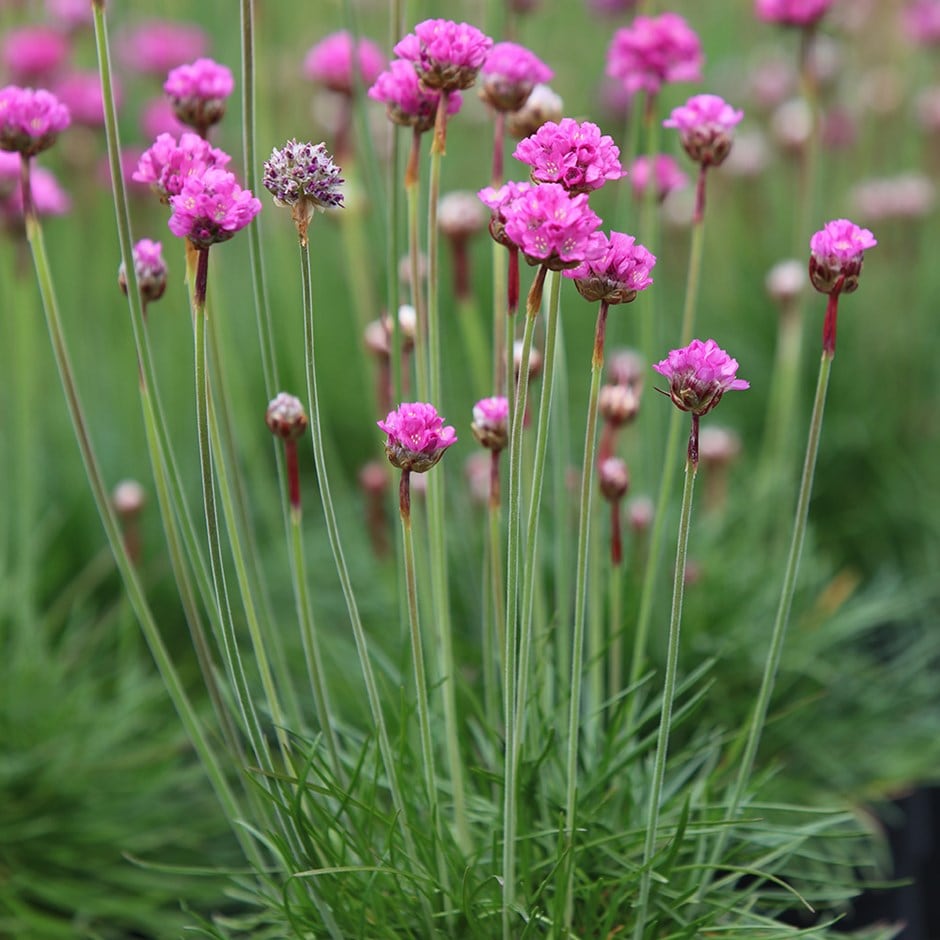Armeria maritima 'Splendens'
pink seathrift
- 9cm pot
- £7.99
- In stock (shipped within 2-3 working days)
- 3 × 9cm pots
- £18.99 £6.33 each
- In stock (shipped within 2-3 working days)
- 6 × 9cm pots
- £32.00 £5.33 each
- In stock (shipped within 2-3 working days)
Delivery options
- Standard £5.99
- Position: full sun
- Soil: well-drained soil, or loam-based compost for containers
- Rate of growth: average
- Flowering period: June to August
- Hardiness: fully hardy
Bright pink flower heads on slender stems rise above neat clumps of grass-like evergreen foliage from late spring into summer. This low-growing perennial stays compact, making it ideal for edging, gravel gardens, or rockeries.
It thrives in full sun and free-draining soil, and copes well with poor, sandy conditions. Once established, it tolerates drought and is highly salt-tolerant, making it well-suited to coastal sites. Flowers attract pollinators, and dried seedheads offer added seasonal interest.
Armeria maritima 'Splendens' is easy to grow, needs minimal maintenance once established, and spreads slowly to form a dense, tidy mat. Avoid heavier soils or those prone to waterlogging soil, especially in winter. Regular deadheading encourages prolonged blooming.
It thrives in full sun and free-draining soil, and copes well with poor, sandy conditions. Once established, it tolerates drought and is highly salt-tolerant, making it well-suited to coastal sites. Flowers attract pollinators, and dried seedheads offer added seasonal interest.
Armeria maritima 'Splendens' is easy to grow, needs minimal maintenance once established, and spreads slowly to form a dense, tidy mat. Avoid heavier soils or those prone to waterlogging soil, especially in winter. Regular deadheading encourages prolonged blooming.
Armeria grows best in full sun and free-draining, poor to moderately fertile soil so ideal for coastal gardens, rockeries, gravel borders, and edging paths. Water well during establishment, but once settled, it becomes drought tolerant and requires little irrigation.
Avoid rich soils or overfeeding, as this encourages weak, floppy growth and reduces flowering. Deadhead faded blooms regularly to prolong the display and maintain a tidy look.
Every few years, divide mature clumps in spring to keep them vigorous and compact. It dislikes winter wet, so ensure drainage is good—raise the planting area or add grit if necessary. In containers, use a gritty, low-fertility loam-based compost mix, such as John Innes No. 2, to mimic its natural conditions.
Avoid rich soils or overfeeding, as this encourages weak, floppy growth and reduces flowering. Deadhead faded blooms regularly to prolong the display and maintain a tidy look.
Every few years, divide mature clumps in spring to keep them vigorous and compact. It dislikes winter wet, so ensure drainage is good—raise the planting area or add grit if necessary. In containers, use a gritty, low-fertility loam-based compost mix, such as John Innes No. 2, to mimic its natural conditions.

